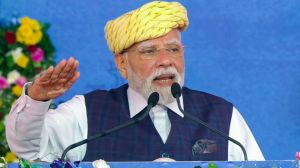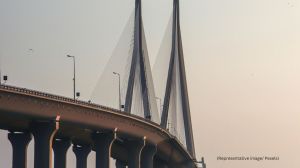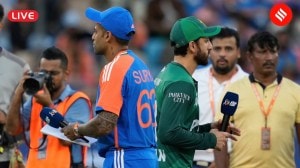Astronauts snare wayward satellite in bold rescue act
CAPE CANAVERAL, NOV 25: Two spacewalking astronauts leaned over and grabbed a slowly spinning $ ten million satellite with their gloved han...

CAPE CANAVERAL, NOV 25: Two spacewalking astronauts leaned over and grabbed a slowly spinning $ ten million satellite with their gloved hands in a bold rescue that required more patience than strength.
NASA’s Winston Scott and Japanese astronaut Takao Doi, perched in bulky spacesuits on opposite sides of Columbia’s cargo bay, reached out and grabbed the Å“3,000 (1,360 kg) Spartan satellite early today.
“Okay, now that we’ve got it, Doi, let’s decide what we are going to do with it,” Scott said moments later.
Manhandling the bulky spacecraft onto a cradle in the shuttle’s cargo bay proved trickier than expected.
A telescoping pole used by Scott to get in position for the rescue refused to retract fully and was getting in the way as the astronauts tried to lower the satellite.
Twenty minutes later the two men were still struggling with Spartan and mission control instructed the crew to use the shuttle’s robot arm to complete the task.
Indian-born astronaut Kalpana Chawla, operating the arm from inside the cabin, took the satellite from the spacewalkers and set it down on its cradle.
The shuttle had flown in formation with Spartan for about 90 minutes before it was correctly positioned for the rescue. The spacewalkers leaned back in their foot restraints, the satellite hanging in space above their heads, as mission commander Kevin Kregel inched Columbia to within arms reach of the spacecraft.
The capture was made easier because the satellite’s spin had slowed to a near stop, indicating it may have been stabilized by a back-up control system as NASA officials had hoped.
Spartan was to have flown free of the shuttle for two days studying the fiery outer atmosphere of the sun, but it malfunctioned moments after it was deployed on Friday.
The satellite was then knocked into a spin when an attempt to retrieve it with the robot arm went wrong. The astronauts were forced to temporarily abandon Spartan while mission control drew up the rescue plan.
With Spartan captured, the spacewalkers moved on to their originally planned activities, including an evaluation of a space station construction crane.
A planned test flight of a robot camera, which resembles an oversized floating soccer ball, was cancelled to accommodate the satellite rescue.
The planned six-hour excursion was the first spacewalk by the Japanese astronaut and Scott’s second outing into space.
Columbia blasted off from Florida’s Kennedy space center last Thursday. In addition to Spartan, it carries a suite of microgravity experiments and an instrument to study the distribution of ozone in the earth’s atmosphere.
Photos



- 01
- 02
- 03
- 04
- 05




























